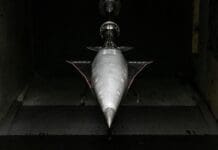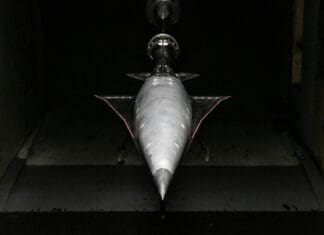An open-ocean drone test flight driven by the goal of improving timely delivery medical services was completed between two islands in under two hours. The hydro-powered drone flight was the first for the U.S. unmanned aerial systems industry, and was the climax of a collaborative effort that began two years ago in the wake of Hurricane Maria. The USVI Department of Health was challenged to find better ways to move medical samples and supplies between islands, particularly when infrastructure was down and traditional methods like seaplanes and boats were too slow or inaccessible.
The Doosan hydrogen fuel cell-powered DS30 drone carried 40 simulation vials and health supplies for 43 miles, from a testing facility on St. Croix to a hospital on St. Thomas.
The drone was developed by Skyfire Consulting, Doosan Mobility Innovation, the U.S. Virgin Islands (USVI) Department of Health.
The team physically followed the flight by boat along with a Doosan pilot that hand-flew the drone throughout the full length of the trip while traveling at an average speed of 23 knots, according to insideunmannedsystems.com.
Matt Sloane, CEO of Skyfire Consulting said: “At the time, we had doubts about whether a drone could really make a difference due to the distance between islands. That’s when we brought Doosan into the mix and started discussing how their hydrogen fuel cell technology could help us achieve that flight time.”
The Doosan DS30 is the world’s first fuel cell powerpack that enables long-endurance flight for different commercial drone models and applications. The multirotor drone’s technology enables long-endurance flight up to 120 minutes (without payload).
According to doosanmobilit.com, the powerpack can be controlled and monitored regardless of distance. Transmitting and receiving of powerpack and flight controller information is done via a built-in dedicated communication module.
The DMI View App shows the remaining flight time, measured by the amount of hydrogen left in the fuel cell powerpack.
The drone will stop over at a nearby landing point or return to its home point when the remaining amount of hydrogen is insufficient, helping to guarantee a safe flight experience.
While the public health industry has used long-range fixed wing drones for these types of applications, Sloane said they opted to use a multirotor due to its precise takeoffs and landings, low risk of getting damaged and ability to be flown fairly easily by an operator—it also goes further.
The long term goal, Sloane said, is for someone to be able to take a blood sample at the hospital, stick it on a drone, press a button and have it fly 43 miles to the public health lab within an hour to test it.
For now, they’re focused on the basics required to make this a viable solution for the future, which means being able to fly the drone in 80-90 percent of weather conditions, looking at deployment methods and determining how to autonomously pilot the flights.


























